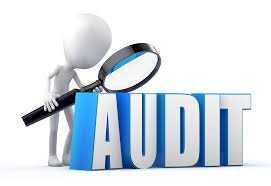Pharmacovigilance Audits and Inspections

✅ Pharmacovigilance Audits and Inspections
🔍 1. Pharmacovigilance Audits
📘 Definition:
A systematic, independent, and documented process to evaluate the pharmacovigilance (PV) system, its quality system, and compliance with regulatory requirements.
📌 Purpose:
-
Ensure compliance with GVP and regulatory obligations.
-
Verify effectiveness of the PV system.
-
Identify risks, gaps, or deviations.
-
Enable continuous improvement through CAPA.
🗂️ Key Audit Types:
-
System Audits – Assess overall PV system, SOPs, QPPV responsibilities.
-
Process Audits – Evaluate specific PV activities (e.g., ICSR processing, literature search).
-
Product-Specific Audits – Focused on safety data and risk management of a particular product.
-
Contractor/Partner Audits – Assess compliance of service providers like CROs.
🔄 Audit Cycle:
-
Planning & Risk Assessment
-
Conducting the Audit (on-site or remote)
-
Reporting & Follow-up
-
CAPA Implementation
-
Effectiveness Check
🔐 Common Audit Findings:
-
Delayed ICSR submissions
-
Lack of QPPV oversight
-
Incomplete SOPs or training records
-
Poor data quality in safety databases
🕵️ 2. Pharmacovigilance Inspections
📘 Definition:
A formal examination by regulatory authorities (e.g., EMA, FDA, MHRA) to assess compliance with pharmacovigilance legislation and GVP guidelines.
🛑 Objectives:
-
Ensure patient safety through regulatory compliance.
-
Assess QPPV responsibilities, safety reporting, and signal management.
-
Verify MAH’s obligations for post-marketing safety.
🏛️ Types of Inspections:
-
Routine Inspections – Scheduled based on risk profiling or rotation.
-
For-Cause Inspections – Triggered by safety concerns or serious non-compliance.
-
Triggered Inspections – Due to new product launch, change in MAH, or referrals.
🔍 Key Inspection Focus Areas:
-
Pharmacovigilance System Master File (PSMF)
-
ICSR reporting timelines
-
Risk Management Plans (RMPs)
-
Signal detection and management
-
Corrective and preventive actions (CAPA)
-
Data integrity and safety database validation
📅 Inspection Phases:
-
Pre-Inspection Notification & Request for Documents
-
On-Site/Remote Inspection
-
Debriefing Meeting
-
Inspection Report
-
Response Submission and CAPA
-
Follow-up or Re-inspection
⚖️ Regulatory Guidelines Referenced
| Document | Agency/Group | Focus |
|---|---|---|
| GVP Module III | EMA | Inspections of PV systems |
| GVP Module IV | EMA | Pharmacovigilance audits |
| FDA PV Inspections Manual | FDA (CDER) | Inspection procedures in the U.S. |
| MHRA GVP Guidelines | UK MHRA | National PV inspection expectations |
| ICH E6 (R2) | ICH | GCP and sponsor responsibility in PV audits |
🧠 Summary for Interviews or Study:
| Audits | Inspections |
|---|---|
| Internal or external | Conducted by regulators |
| Proactive and planned | Reactive or risk-based |
| Focus on self-assessment | Focus on legal compliance |
| Results in CAPA | May result in warning letters, 483s, or sanctions |
🎓 Discover one of the best Pharmaceutical Pharmacovigilance course available — click below to explore the course that’s shaping future Pharmacovigilance skills.

